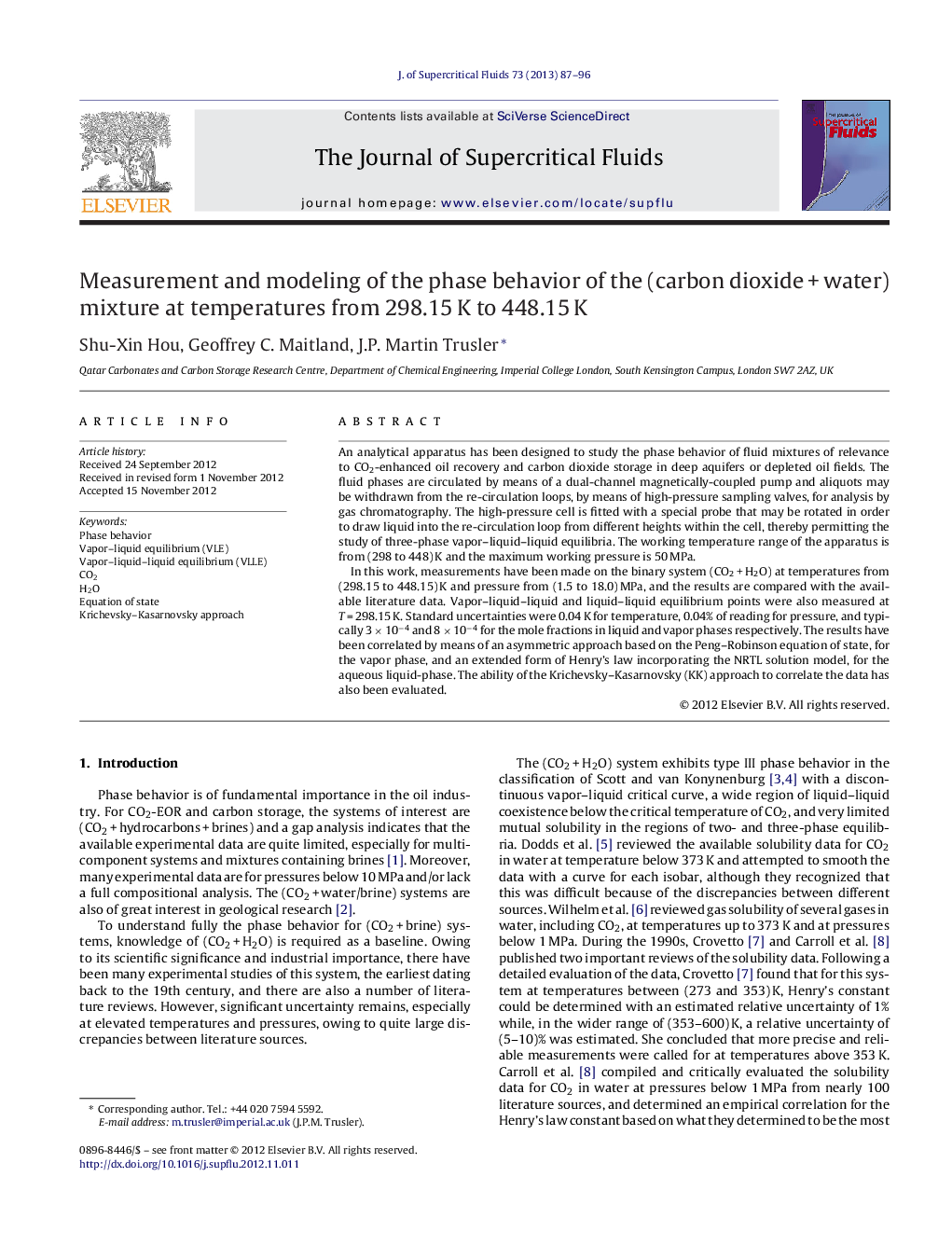| کد مقاله | کد نشریه | سال انتشار | مقاله انگلیسی | نسخه تمام متن |
|---|---|---|---|---|
| 230656 | 1427404 | 2013 | 10 صفحه PDF | دانلود رایگان |

An analytical apparatus has been designed to study the phase behavior of fluid mixtures of relevance to CO2-enhanced oil recovery and carbon dioxide storage in deep aquifers or depleted oil fields. The fluid phases are circulated by means of a dual-channel magnetically-coupled pump and aliquots may be withdrawn from the re-circulation loops, by means of high-pressure sampling valves, for analysis by gas chromatography. The high-pressure cell is fitted with a special probe that may be rotated in order to draw liquid into the re-circulation loop from different heights within the cell, thereby permitting the study of three-phase vapor–liquid–liquid equilibria. The working temperature range of the apparatus is from (298 to 448) K and the maximum working pressure is 50 MPa.In this work, measurements have been made on the binary system (CO2 + H2O) at temperatures from (298.15 to 448.15) K and pressure from (1.5 to 18.0) MPa, and the results are compared with the available literature data. Vapor–liquid–liquid and liquid–liquid equilibrium points were also measured at T = 298.15 K. Standard uncertainties were 0.04 K for temperature, 0.04% of reading for pressure, and typically 3 × 10−4 and 8 × 10−4 for the mole fractions in liquid and vapor phases respectively. The results have been correlated by means of an asymmetric approach based on the Peng–Robinson equation of state, for the vapor phase, and an extended form of Henry's law incorporating the NRTL solution model, for the aqueous liquid-phase. The ability of the Krichevsky–Kasarnovsky (KK) approach to correlate the data has also been evaluated.
Figure optionsDownload as PowerPoint slideHighlights
► An analytical apparatus has been designed and commissioned for high T and p phase behavior measurements.
► Measurements have been made on CO2 + H2O at temperatures from (298.15 to 448.15) K and pressures from (1.5 to 18.0) MPa.
► The measured data have been correlated by means of an asymmetric approach.
► The Krichevsky–Kasarnovsky approach and Duan's correlation model are also evaluated.
Journal: The Journal of Supercritical Fluids - Volume 73, January 2013, Pages 87–96